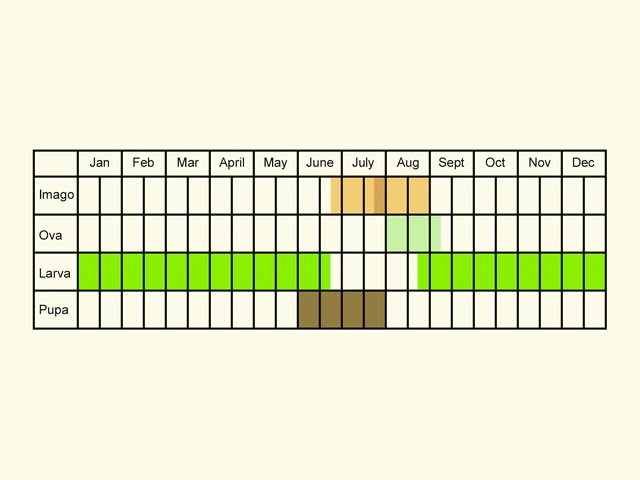Coleophoridae
37.097 Goldilocks Case-bearer Coleophora linosyridella Fuchs, 1880
pRDB1
Similar species:
Forewing: 5 to 6mm
Habitats: Salt-marsh and cliffs
Habits: The moth is nocturnal. It was discovered on Goldilocks Aster in 2013.
Foodplant: The larva feeds on Sea Aster or Goldilocks Aster. At first it makes a small mine filling the entrance with frass, then uses this as the initial case. The rest is completely made of silk. The larva mines the higher leaves of Sea Aster from the under surface, producing numerous small blotches that are mainly near the leaf margin. It overwinters attached to the end of a leaf that will probably be submerged during spring tides. It recommences feeding in May, at the same time extending both the width and length of the case, causing dark lines where the case has been slit and bridged with silk. The larva can now be found low on the plant concealed by other plants (as is the case when it feeds on the cliffs on Goldilocks Aster), but the mines are still on the leaf margins. The fully formed slender, tubular case is ochreous with a darker dorsal area towards the front. It is trivalved 8 to 11mm long, m.o. at a 0° to 10° angle. It pupates in June attached to a leaf of the foodplant, a grass stem or other foliage.
On the European mainland it has also been recorded feeding on Stonecrop Aster.

